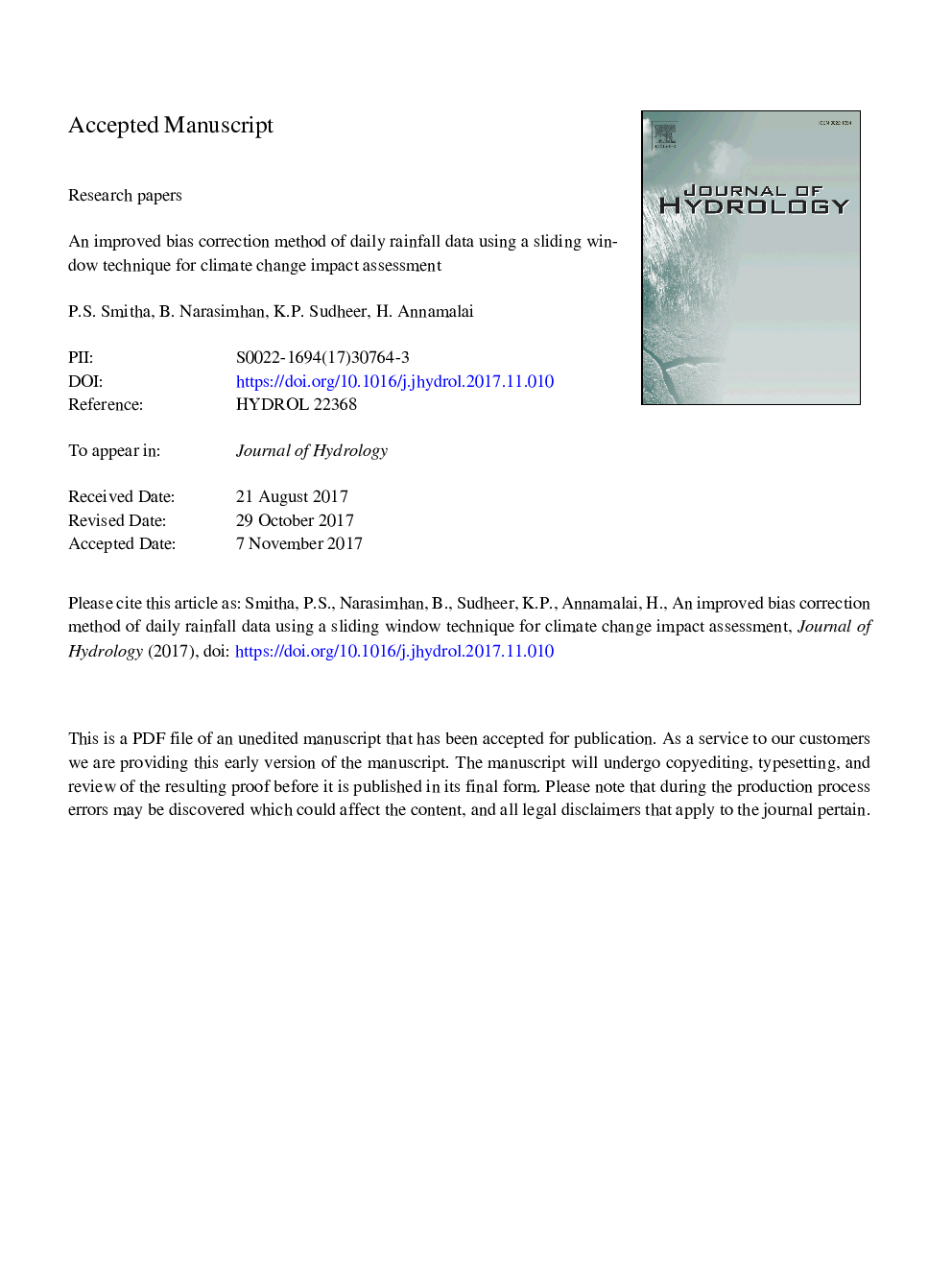| کد مقاله | کد نشریه | سال انتشار | مقاله انگلیسی | نسخه تمام متن |
|---|---|---|---|---|
| 8895105 | 1629898 | 2018 | 64 صفحه PDF | دانلود رایگان |
عنوان انگلیسی مقاله ISI
An improved bias correction method of daily rainfall data using a sliding window technique for climate change impact assessment
ترجمه فارسی عنوان
یک روش تصحیح تعصب بهبود داده های باران روزانه با استفاده از یک روش پنجره کشویی برای ارزیابی تأثیر تغییرات
دانلود مقاله + سفارش ترجمه
دانلود مقاله ISI انگلیسی
رایگان برای ایرانیان
کلمات کلیدی
موضوعات مرتبط
مهندسی و علوم پایه
علوم زمین و سیارات
فرآیندهای سطح زمین
چکیده انگلیسی
Regional climate models (RCMs) are used to downscale the coarse resolution General Circulation Model (GCM) outputs to a finer resolution for hydrological impact studies. However, RCM outputs often deviate from the observed climatological data, and therefore need bias correction before they are used for hydrological simulations. While there are a number of methods for bias correction, most of them use monthly statistics to derive correction factors, which may cause errors in the rainfall magnitude when applied on a daily scale. This study proposes a sliding window based daily correction factor derivations that help build reliable daily rainfall data from climate models. The procedure is applied to five existing bias correction methods, and is tested on six watersheds in different climatic zones of India for assessing the effectiveness of the corrected rainfall and the consequent hydrological simulations. The bias correction was performed on rainfall data downscaled using Conformal Cubic Atmospheric Model (CCAM) to 0.5°â¯Ãâ¯0.5° from two different CMIP5 models (CNRM-CM5.0, GFDL-CM3.0). The India Meteorological Department (IMD) gridded (0.25°â¯Ãâ¯0.25°) observed rainfall data was considered to test the effectiveness of the proposed bias correction method. The quantile-quantile (Q-Q) plots and Nash Sutcliffe efficiency (NSE) were employed for evaluation of different methods of bias correction. The analysis suggested that the proposed method effectively corrects the daily bias in rainfall as compared to using monthly factors. The methods such as local intensity scaling, modified power transformation and distribution mapping, which adjusted the wet day frequencies, performed superior compared to the other methods, which did not consider adjustment of wet day frequencies. The distribution mapping method with daily correction factors was able to replicate the daily rainfall pattern of observed data with NSE value above 0.81 over most parts of India. Hydrological simulations forced using the bias corrected rainfall (distribution mapping and modified power transformation methods that used the proposed daily correction factors) was similar to those simulated by the IMD rainfall. The results demonstrate that the methods and the time scales used for bias correction of RCM rainfall data have a larger impact on the accuracy of the daily rainfall and consequently the simulated streamflow. The analysis suggests that the distribution mapping with daily correction factors can be preferred for adjusting RCM rainfall data irrespective of seasons or climate zones for realistic simulation of streamflow.
ناشر
Database: Elsevier - ScienceDirect (ساینس دایرکت)
Journal: Journal of Hydrology - Volume 556, January 2018, Pages 100-118
Journal: Journal of Hydrology - Volume 556, January 2018, Pages 100-118
نویسندگان
P.S. Smitha, B. Narasimhan, K.P. Sudheer, H. Annamalai,
